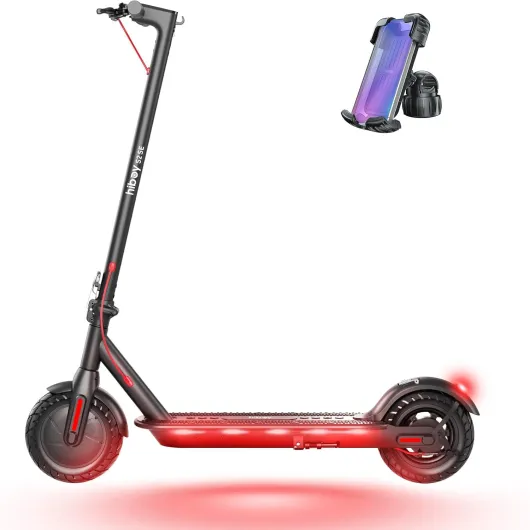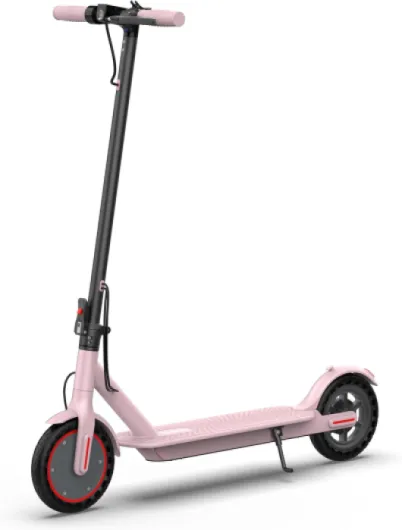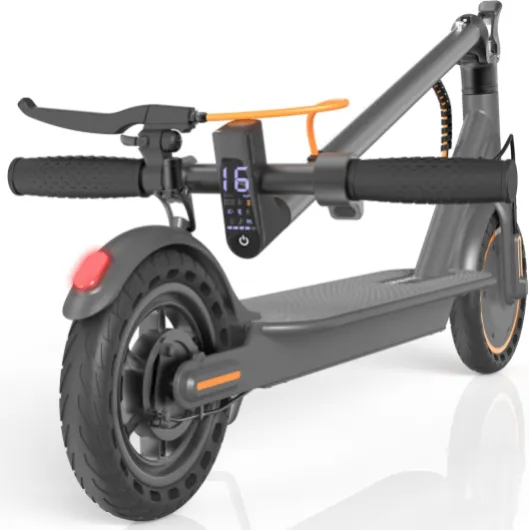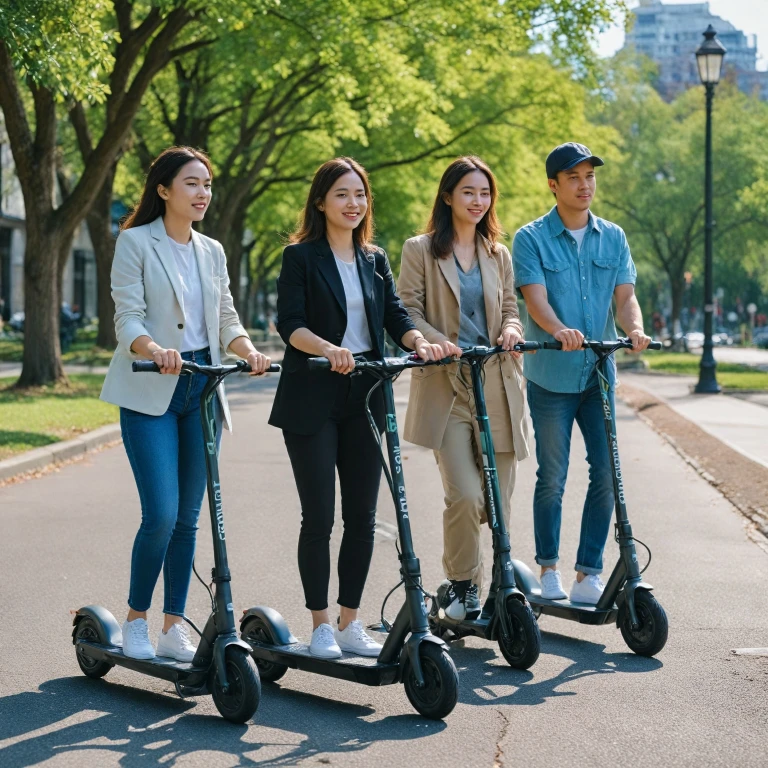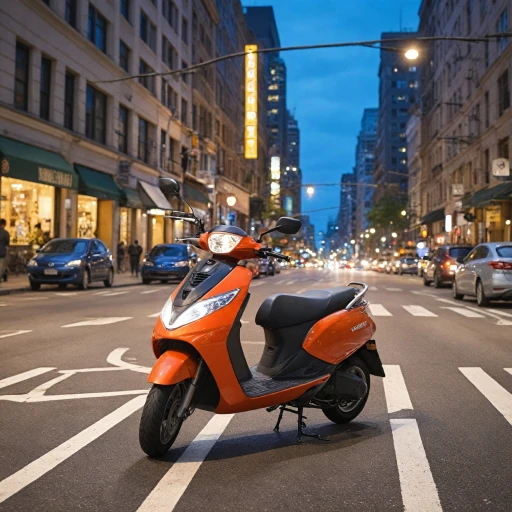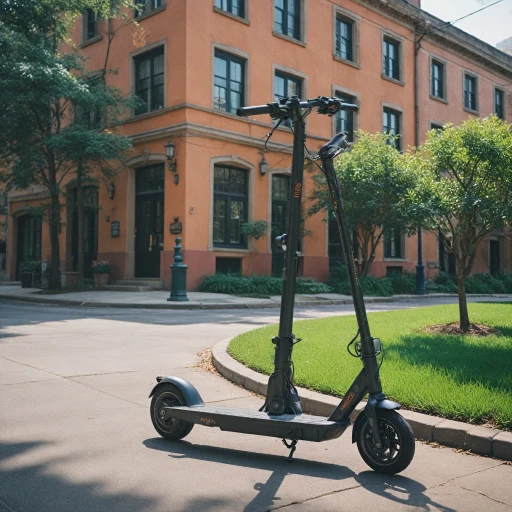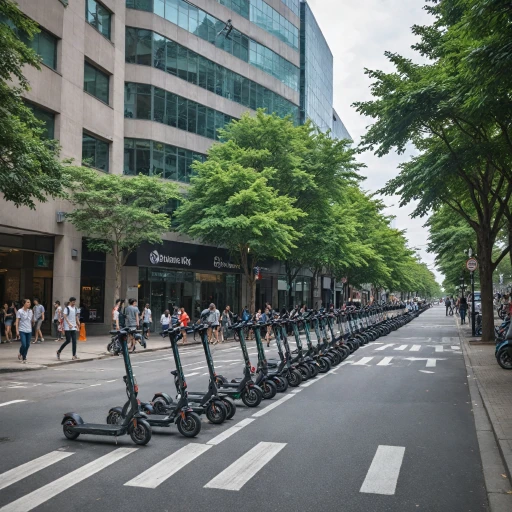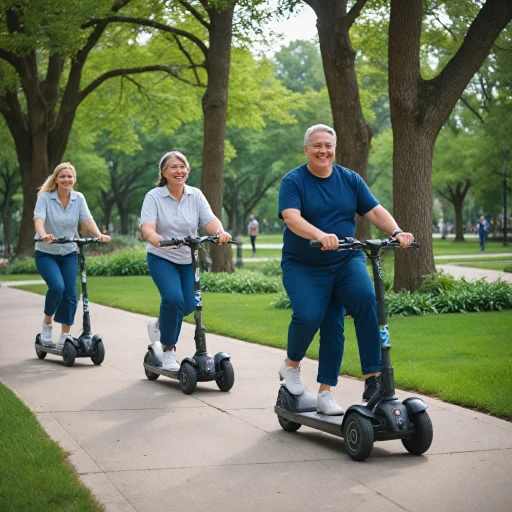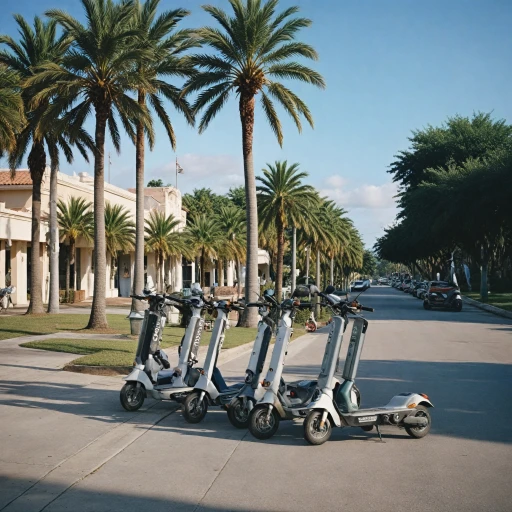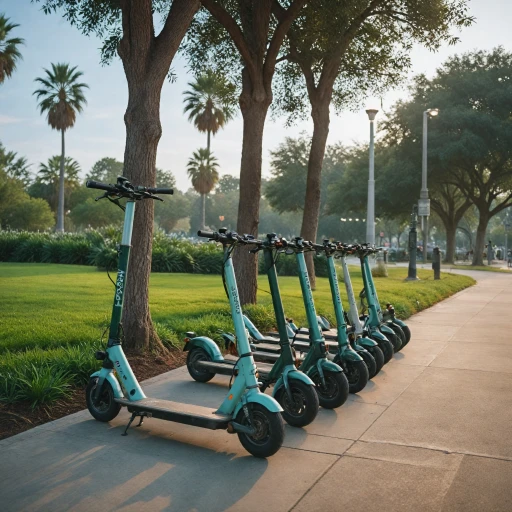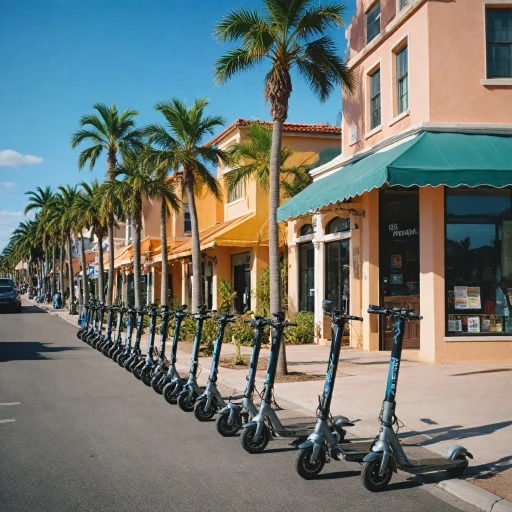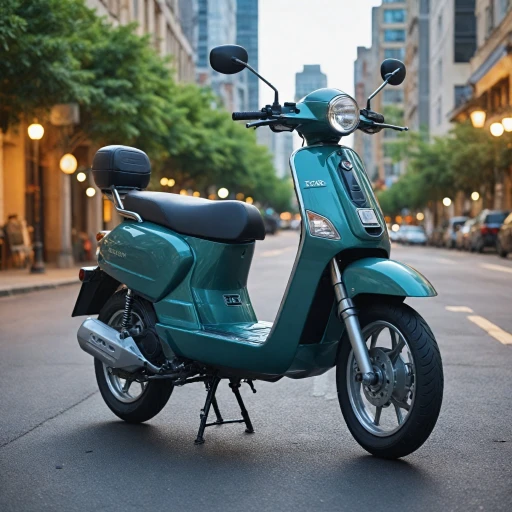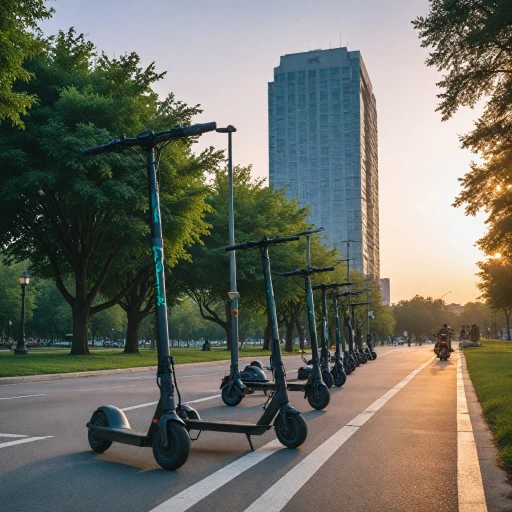
Understanding the Surge in Electric Scooter Popularity
Examining the Growth of Electric Scooters
In recent years, the surge in popularity of electric scooters has been nothing short of remarkable. These scooters have transformed the landscape of urban mobility, offering a new dimension to the way people navigate cities. The scooter market has seen significant growth due to several factors that appeal to both riders and city planners alike.
Initially seen as a novel form of transportation, electric scooters have become a staple in many urban areas. The convenience of electric vehicle technology, particularly ion batteries, contributes to the booming popularity. Additionally, the scooter sharing model, which allows users to access a scooter on demand, has reshaped the concept of mobility as a shared, convenient solution.
With the technological advancements enabling improved battery life and eco-friendly features, scooters have caught the attention of those seeking an environmentally conscious mode of transportation. The ease with which they cut through traffic congestion only adds to their appeal, especially in densely populated regions like Asia Pacific and North America.
The rise can also be attributed to the cost-effectiveness compared to owning a car, thus making scooters financially viable for everyday commuters in the city. When considering the forecast period ahead, it's clear this market is set to continue its upward trajectory, building upon its current worth in the USD billions. Considering how micro mobility is becoming integral to transportation networks in many cities, the trend is expected to become even more prominent.
For those interested in diving deeper into this evolving phenomenon, exploring the latest trends in electric scooters can offer valuable insights. Further details can be found in this comprehensive guide.
The Role of Electric Scooters in Urban Mobility
Electric Scooters and Their Role in Modern Transportation
The surge in popularity of electric scooters isn't just a passing trend; it's a reflection of a significant shift in urban mobility. As cities grow and evolve, so does the demand for efficient modes of transportation. Electric scooters have emerged as a viable solution, offering a convenient and eco-friendly alternative to conventional vehicles.
These compact vehicles are particularly appealing in urban settings where traffic congestion is a constant challenge. Riders can easily maneuver through crowded streets, often reaching their destinations faster than cars or public transport. This increased mobility within cities not only saves time but also reduces reliance on fossil fuels, contributing to a greener environment.
Micro Mobility Revolution
The concept of micro mobility is reshaping the transportation landscape across the globe. Electric scooters, along with other personal mobility devices like bikes and electric wheelers, form a crucial part of this revolution. This growing trend has been most notable in regions like North America and Asia Pacific, where the scooter market has seen significant expansion.
In North America, for instance, the market size for electric scooters continues to expand, spurred by increased demand for scooter sharing services. These services provide a flexible transportation option, allowing users to ride scooters for short distances, which is practical for last-mile connectivity.
Economic Impact of Scooter Sharing
The booming popularity of electric scooters has created new business opportunities. Companies involved in scooter development and sharing schemes are experiencing rapid growth. The global scooter market is projected to reach several USD billion during the forecast period. This growth aligns with the increasing number of riders who prefer quick and affordable travel solutions.
Convenience Meets Sustainability
Electric scooters not only promote a healthier environment by leveraging lithium ion batteries, but they also offer an eco-friendly option for urban dwellers. Battery swapping technologies further add to their appeal by minimizing downtime and ensuring uninterrupted service availability. For those considering more sustainable choices, opting for a refurbished electric scooter might be a cost-effective yet environmentally responsible alternative.
The role of electric scooters in shaping the future of urban mobility is undeniable. As more people embrace micro mobility solutions, cities globally are likely to continue witnessing shifts towards cleaner, faster, and more efficient transportation options.
Safety Concerns and Regulations
Addressing Safety Concerns Related to Electric Scooters
The soaring popularity of electric scooters has highlighted the importance of addressing safety concerns in the scooter market. With their increasing presence in cities, it's crucial to understand how regulations are shaping safety measures to protect scooter users and pedestrians alike. Electric scooters are a convenient transportation option, often seen as a solution to reduce traffic congestion in urban areas. However, the rise of scooters on city streets has brought with it a surge in injuries among riders. To mitigate these risks, many cities are implementing specific safety regulations to govern the use of electric scooters.- Helmet Laws: A significant regulation in various cities worldwide is the mandatory use of helmets. These rules aim to decrease head injuries, which are common among scooter riders involved in accidents.
- Speed Limits and Geofencing: Speed regulations, often defined as local speed limits for electric scooters, are being enforced to improve safety. Additionally, some cities are using geofencing technology to designate specific areas where scooters can operate or adjust their speed.
- Dedicated Lanes: Infrastructure improvements, such as dedicated scooter lanes, are being introduced to safeguard riders and improve traffic flow in congested areas. These lanes are shared with bikes, providing a safer micro mobility option.
- Battery Safety: With scooters powered by lithium-ion batteries, regulations are enforced to ensure the safe design and handling of battery swapping mechanisms. This also includes guidelines on the disposal and recycling of ion batteries to protect the environment.
Technological Innovations in Electric Scooters
Innovations that Keep the Wheels Rolling
In recent years, the electric scooter market has witnessed remarkable technological advancements, transforming these vehicles into efficient urban mobility solutions. Among these innovations, lithium-ion batteries stand out. With their ability to store more energy and weigh less than traditional batteries, they have become the cornerstone of modern electric scooters. This development directly addresses the needs of urban riders by extending battery life, enhancing overall performance, and reducing charging times. Another innovative trend shaping the scooter market is the advent of battery swapping systems. This technology allows users to exchange depleted batteries for fully charged ones at dedicated stations, minimizing downtime and maximizing convenience, especially in bustling cities where time is of the essence. Battery swapping not only enables longer rides without interruption, but also contributes to the sustainability of scooter sharing programs. Smart features are also becoming increasingly common. Electric scooters now often come equipped with GPS tracking, Bluetooth connectivity, and mobile apps that offer real-time data on speed, route optimization, and battery status. These advancements enhance riders' experiences by providing seamless integration with modern digital lifestyles. Moreover, scooter manufacturers are investing in sophisticated suspension systems and enhanced braking mechanisms, adding layers of safety and comfort to the riding experience. This focus on safety is crucial, given the rising number of riders in crowded urban environments. The integration of electric scooters into the wider micro-mobility landscape is another vital technological trend. As these scooters become an essential part of urban transportation infrastructures, cities are implementing sophisticated networks that include designated lanes and parking spaces. This not only facilitates smoother rides but also mitigates traffic congestion by encouraging people to opt for eco-friendly alternatives over traditional vehicles. As the forecast period progresses, it's evident that technological innovations will continue to revolutionize the electric scooter industry, making them an indispensable part of the future urban transportation ecosystem in both North America and the Asia Pacific. These innovations are not just improving performance and efficiency; they are reshaping the way we think about urban mobility, making electric scooters a significant player in the future of transportation.Environmental Impact of Electric Scooters
Green Urban Commuting
Electric scooters have emerged as a significant player in the quest for eco-friendly transportation options. Unlike traditional vehicles that rely on fossil fuels, these electric wheelers are powered by lithium-ion batteries, offering a more sustainable solution to urban commuting. The shift towards electric scooters reflects a broader trend in the transportation sector, where reducing carbon emissions and mitigating climate change are increasingly prioritized.
Reducing Carbon Footprint
One of the most compelling environmental benefits of electric scooters is their ability to cut down the carbon footprint of urban travel. With rapid urbanization worldwide, especially in densely populated regions such as Asia Pacific and North America, there's a pressing need to minimize emissions from traditional transportation modes. Electric scooters offer an alternative that contributes to cleaner air in cities, promoting healthier urban living conditions.
Alleviating Traffic Congestion
As these scooters weave seamlessly through traffic, they help reduce congestion in crowded city streets. The compact design of electric scooters allows them to navigate urban landscapes more efficiently than cars or traditional bikes, which is particularly advantageous during peak commuting hours. This ease of mobility ensures quicker travel times while lessening the environmental burden of idling vehicles.
Supporting Sustainable Initiatives
Many cities are embracing scooter sharing initiatives as part of their larger sustainable urban mobility strategies. These programs not only provide residents and visitors with convenient transportation options but also invite cities to rethink urban space usage. Incorporating electric scooters into the existing transportation infrastructure supports a more balanced and sustainable urban environment.
Challenges and Considerations
Despite their environmental perks, there are challenges related to the electric scooter market that need addressing. The production and disposal of lithium-ion batteries pose environmental concerns, necessitating the development of effective battery recycling and swapping programs. Furthermore, cities must implement regulations that ensure the responsible management of scooters to prevent urban clutter and maintain safety standards.
Overall, embracing electric scooters as part of a city's transportation ecosystem could drive significant environmental benefits, with widespread adoption predicted to contribute meaningfully to the global effort toward cleaner and more sustainable urban mobility.
